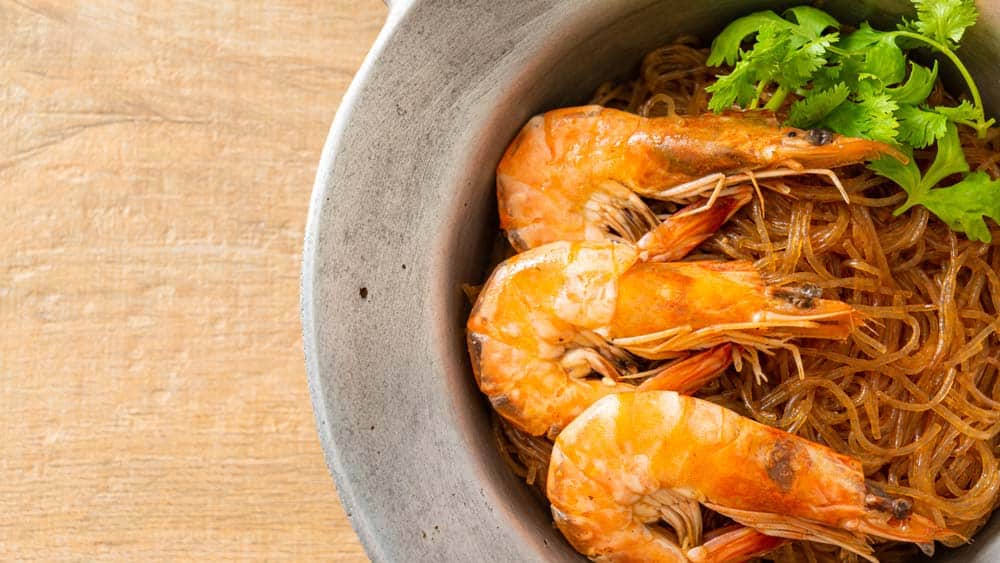Welcome to Paulina Cocina! If you're not familiar with this dish, the first thing we have to tell you is that it's a stew. But it's not just any stew; it's a stew that can be eaten piping hot in winter or warm in cooler weather.
Ajoarriero is a slow-cooked dish made with , and olive oil . You can leave it overnight to allow the flavors to infuse, and we suggest keeping a small roll on hand.
This traditional Spanish recipe is easy to make anywhere in the world, so we no longer have any excuses not to get started. Here we are: ajoarriero .
Content table
About the garlic muleteer
What is it and where did it come from?
Codfish ajoarriero , also known as bacalao al ajoarriero, is a traditional Spanish dish, especially from the Navarre region. It's a dish made from flaked cod sautéed with garlic , peppers, tomatoes, and olive oil , slowly cooked to create a flavorful and comforting combination.
This dish has been part of the Spanish diet for centuries and has its origins in rural life and the trade routes of the arrieros (merchants or transporters who traveled by land).
The recipe may vary slightly depending on the area or the personal preferences of the cooks, but it always stands out for the intense flavor and the mixture of flavors and aromas characteristic of the ajoarriero .
Although ajoarriero is traditionally prepared with cod, there are modern variations that can incorporate other ingredients or adapt to different dietary preferences. It is a beloved dish among lovers of Spanish cuisine and is commonly found on restaurant menus and at food fairs in Spain.

Where does your name come from?
The name " ajoarriero " comes from the arrieros (muleteers), ancient merchants or transporters who traveled with goods by land. It is believed that this dish was popular among them due to its simplicity and ease of preparation on trade routes and long journeys.
Ajoarriero as cod and garlic. Although traditionally a dish of peasants and workers, today it has become a culinary specialty of Spain.
5 facts you should know
- Regional Versatility: Although it originated in Navarre, ajoarriero has spread to other regions in northern Spain, such as La Rioja, Aragon, and some provinces in the Basque Country. Each region may have slight variations in the recipe, adding diversity to this dish.
- Modern adaptations: Despite being a traditional recipe, ajoarriero has undergone modern adaptations. In some places, additional ingredients such as egg, potato, or even seafood have been added to give it a different touch.
- Lenten Dish: Cod, one of the main ingredients in ajoarriero, is a salted and dried fish that keeps for a long time, making it suitable for consumption during Lent. Like Potaje de Vigilia , these are traditional recipes from that time.
- Popular celebrations: In certain regions of Spain, ajoarriero is part of local celebrations and festivities. In Navarre, for example, it is served during the San Fermín Festival, especially during the traditional pilgrimage to the San Fermín de Aldapa shrine.
- Literary inspiration: Ajoarriero has also been mentioned in literary works. In the novel "Tirano Banderas" by Spanish writer Ramón del Valle-Inclán, ajoarriero is mentioned as one of the dishes enjoyed by muleteers.
The secret of a good cod ajoarriero
The secret to a good ajoarriero lies in the quality of the ingredients used and the balance of flavors achieved during preparation. Some key elements for achieving a delicious ajoarriero:
- Quality cod: Using high-quality cod is essential, as it is the main ingredient in the dish. Dried and desalted cod must be in good condition and have a fresh flavor to enhance the final result.
- Fresh, finely chopped garlic: Garlic is essential for ajoarriero, as its name suggests. Using fresh garlic and chopping it finely will allow the garlic flavor to be evenly distributed throughout the dish.
- Ripe peppers and tomatoes: Peppers and tomatoes should be at their peak ripeness to provide an optimal and pleasant flavor. Peppers are usually red or green, and the tomato adds a touch of acidity that balances the dish.
- Quality olive oil: Olive oil is an essential part of the recipe and greatly affects the final flavor of the ajoarriero. Using a quality extra virgin olive oil will enhance the flavors and add a touch of smoothness to the dish.
- Slow cooking: Ajoarriero is a preparation that requires time and patience. Cooking over low heat allows the flavors to blend and develop fully, creating a delicious texture and aroma.
- Balance of flavors: It's important to find the right balance between the ingredients. Neither cod nor garlic should dominate, but rather all the flavors should complement each other harmoniously.
- Additional ingredients (optional): If using additional ingredients, such as onion, potato, or peas, make sure they are thoroughly cooked and properly integrated into the dish.
Ajoarriero is more than just a recipe; it's a reflection of Spain's history and culture. Therefore, each family can have their own version of the ajoarriero recipe, passing it down from generation to generation. This is a traditional recipe, but it welcomes innovations .
Seguime on Instagram ( here )
and on YouTube that I upload new videos every week ( click here )
Ajoarriero recipe
Yield : 4 portions
Preparation time : 30 minutes
Ingredients
- 500 gr of desalted and crushed cod
- 4 cloves of garlic, finely chopped
- 2 red bell peppers, cut into thin strips
- 2 mature, peeled and chopped tomatoes
- 1 large onion, finely chopped
- 1/2 cup extra virgin olive oil
- Salt and pepper to taste
- Chopped fresh parsley to decorate
How to make ajoarriero
- In a large skillet, heat the olive oil over medium heat. Add the chopped garlic and onion and stir until they begin to brown.
- Add the peppers and cook for a few minutes, then add the chopped tomatoes and cook until they break down, forming a kind of sauce.
- Add the flaked cod to the pan and mix with the sauce until all the ingredients are well combined.
- Simmer for 10-15 minutes, stirring to prevent sticking. Taste and season to taste.
- Once the cod is cooked through and has absorbed the flavors of the sauce, remove from the heat. Serve hot, sprinkled with freshly chopped parsley for garnish.






